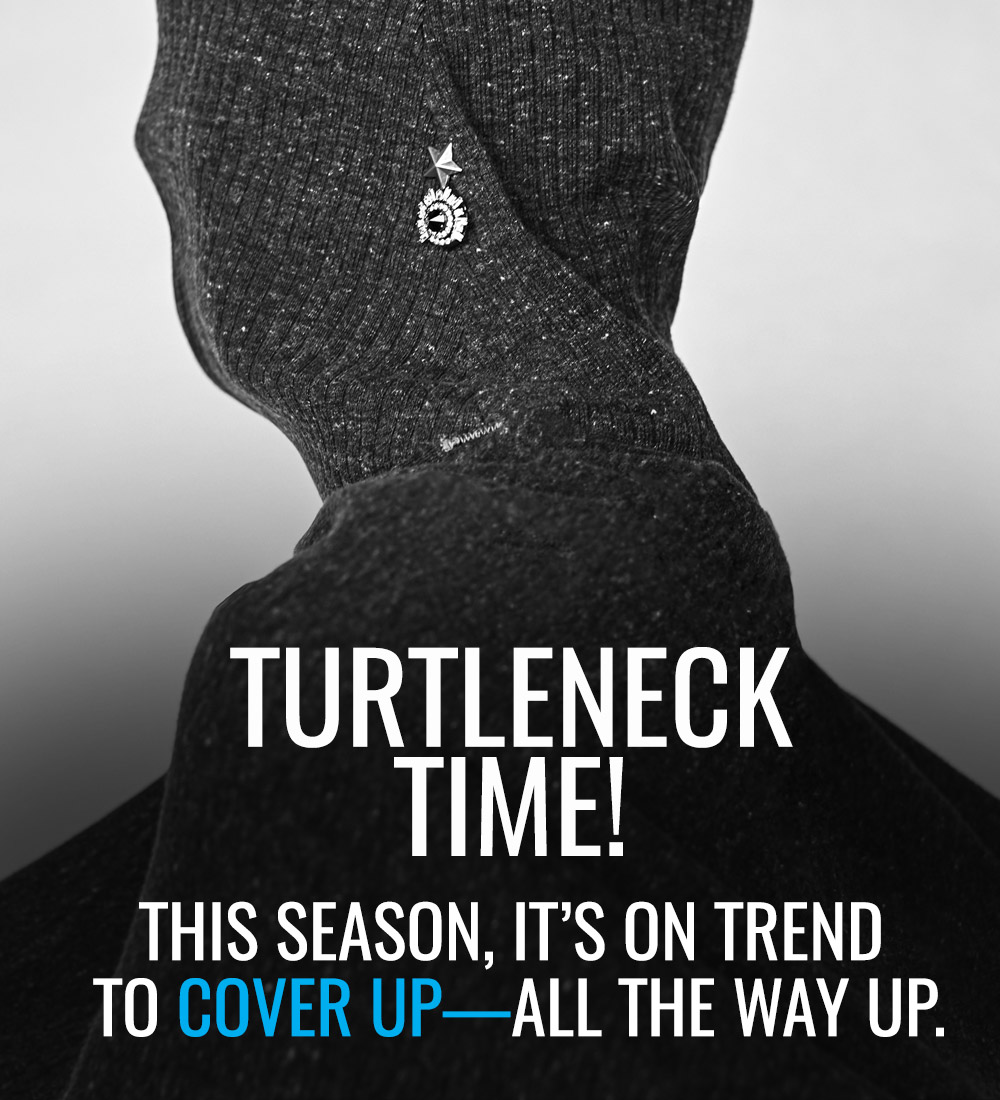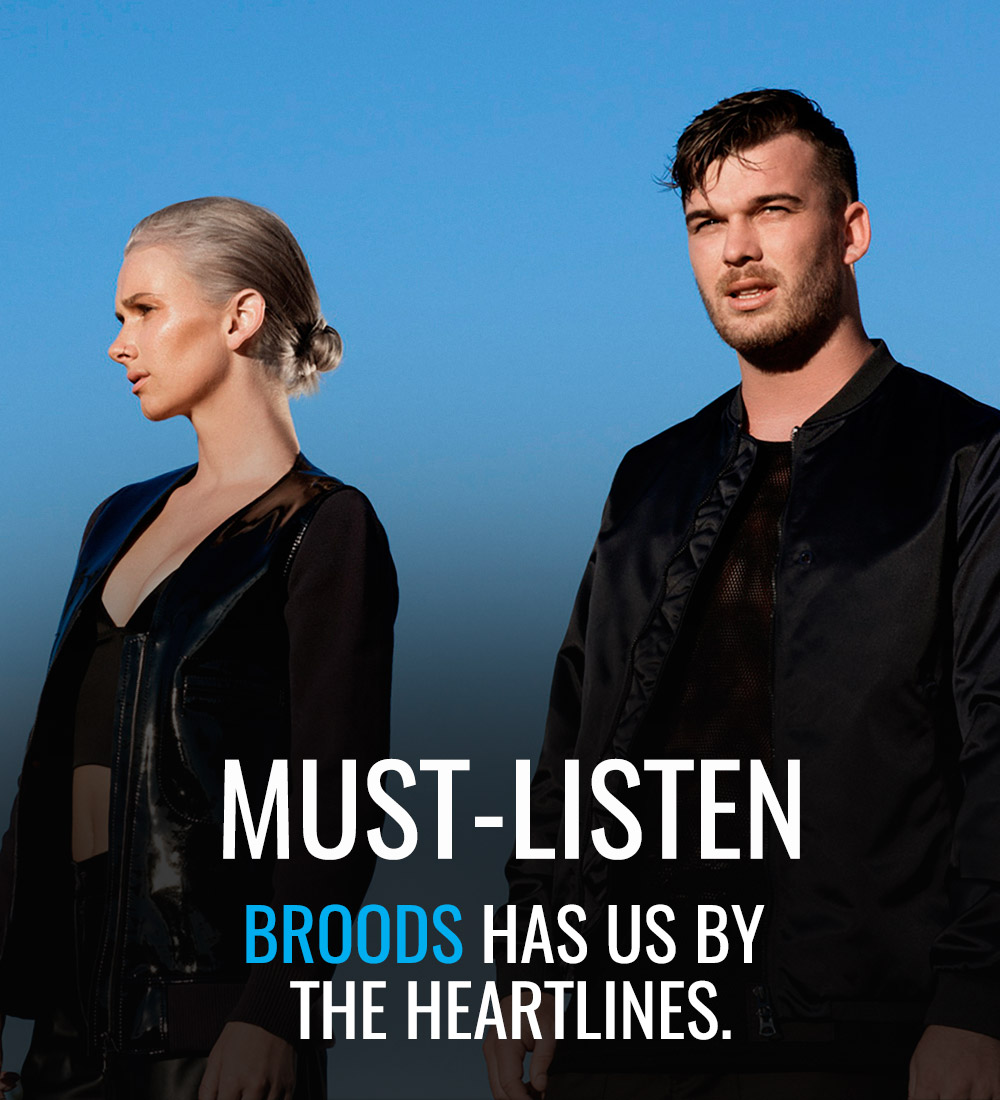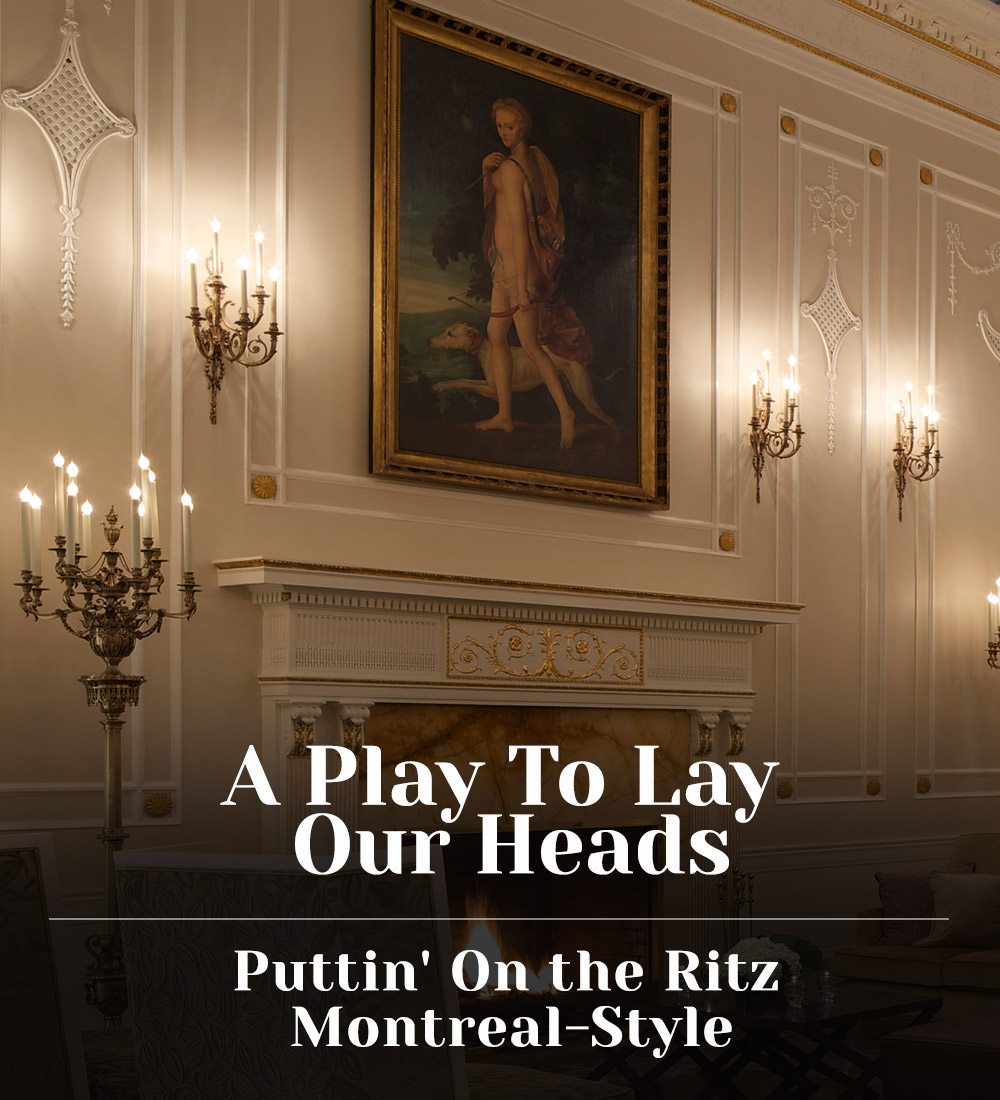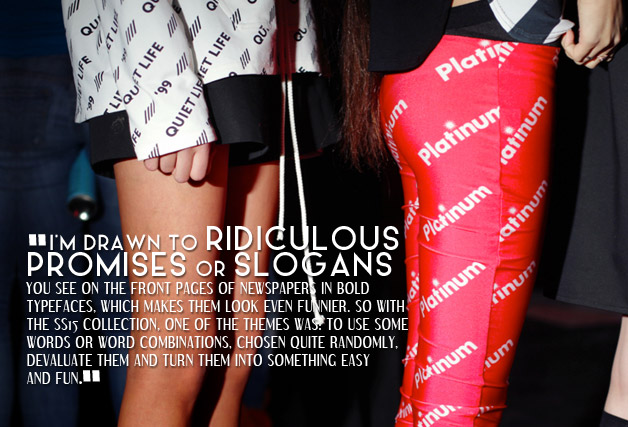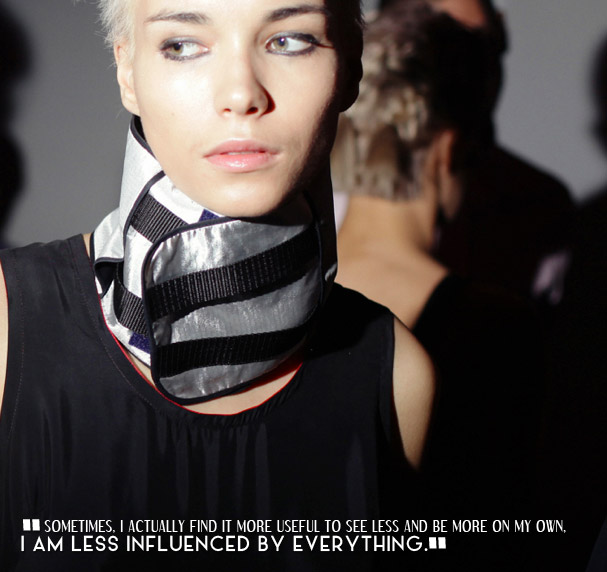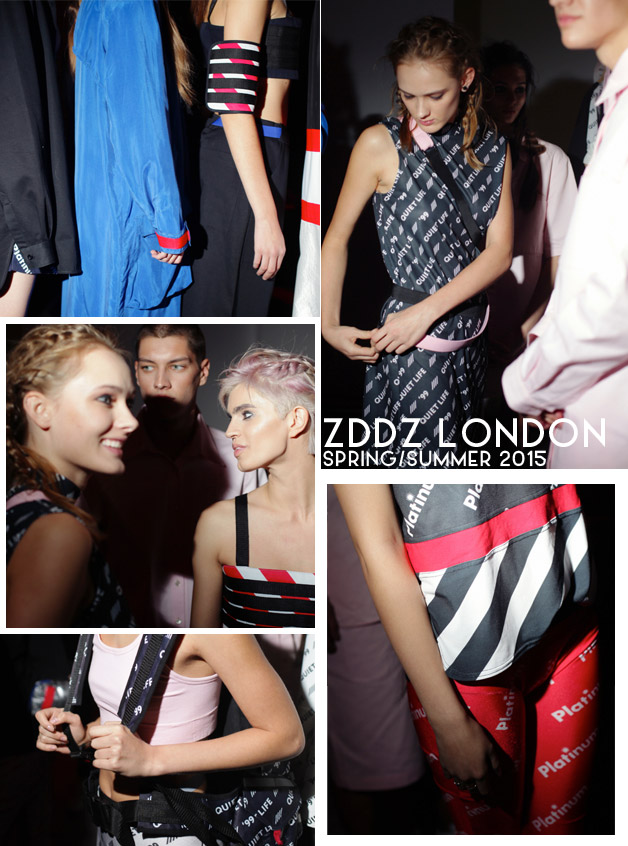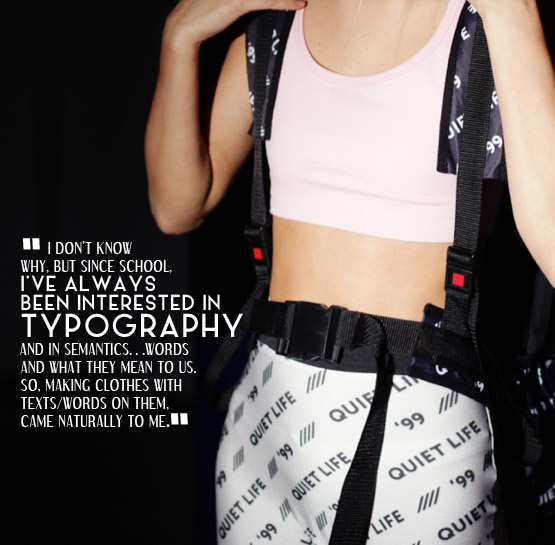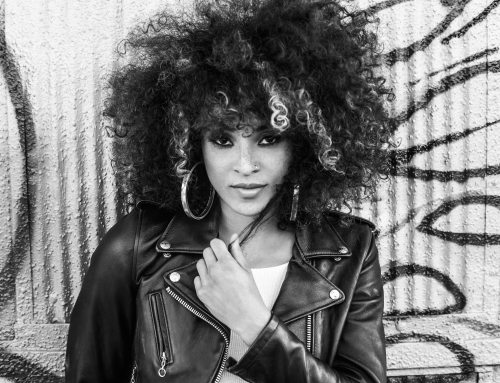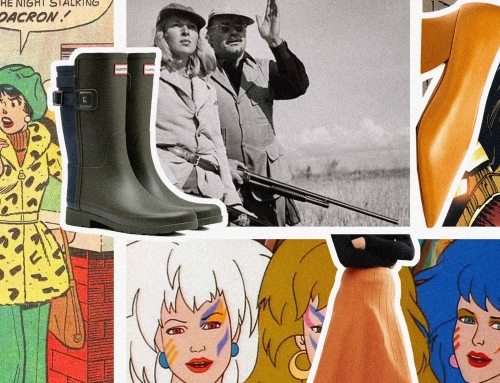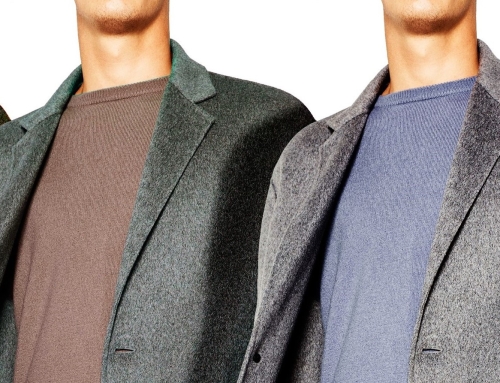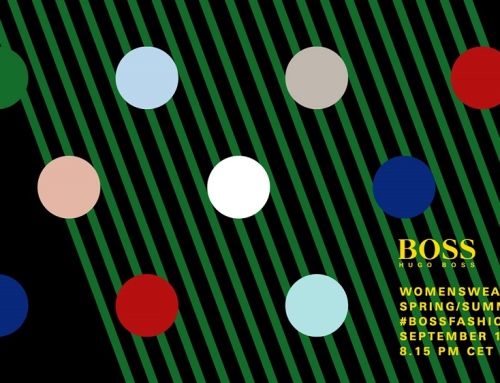Dasha Selyanova—the 29-year-old designer behind buzz label ZDDZ London—grew up in St. Petersburg, moved to London and never left.
Yet, as the old saying would have it, absence has indeed made the heart grow fonder—the Russian shopper’s heart that is. “I was not expecting it to be honest, I thought there was only place for evening gowns, Louis Vuitton bags and just strange clothes” shares Selyanova. “But, it [was] quite accepting of the younger fashion. It encourages me to work more towards expanding there.”
Boasting a place on stock lists at luxury department stores, including Wood Wood Moscow (the city’s answer to Opening Ceremony courtesy of the Danes), not to mention the pages of Russian Vogue, ZDDZ—still a fledgling label, founded back in 2011—has evidently won over its hometown market. As for Selyanova’s place on the London scene and across the pond, rest assured her cool kid status has been solidified by way of celebrity clientele, the likes of British music’s currently bad girl, Rita Ora (she donned a ZDDZ design for her New Year’s Eve Top of the Pops performance last December).
Meanwhile, Selyanova’s professional chops have been affirmed by a successful North American runway debut at the VFiles Made Fashion during last fall’s New York fashion week, piquing the interest of the international fashion media, and ushering in praise from outlets such as The Guardian, which shared a list of “24 Russian Fashion Designers to Watch” (originally featured in Russia’s Clavert Journal), counting ZDDZ London among its picks.
The word “mischievous” comes to mind when perusing ZDDZ’s designs, coupled with the observation that Selyanova prefers to take a headier approach to fashion. The result is a stylish breed of satire, the kind one expects from a British Higher School of Art and Design alum. (The designer also happens to have a digital print course from Central Saint Martins under her belt.)
In an attempt to dig below the surface with her collections, the designer plays with typography to communicate messages—that just happen to be political, rather than overtly so. For Selyanova, clothes literally become a medium for expression and opinion—conversation starters with style appeal. “Fashion can influence the fabric of modern culture because it also reflects it; society get to see itself in it sometimes, I think,” says Selyanova. “It may not change the social/political climate, but [designs can] raise the awareness around certain issues.”
While the designer does not think of herself or her collections as necessarily “political,” Selyanova take on her trade is anything but passive mundane fashion. “I’m drawn to ridiculous promises or slogans you see on the front pages of newspapers in bold typefaces, which makes them look even funnier,” she explains. “So with the SS15 collection, one of the themes was to use some words or word combinations—chosen quite randomly—devaluate them and turn them into something easy and fun. I wouldn’t say the collection is a political one, it’s still more about playing with words in a context and their placement on a women’s body. Those are still my primary areas of interest.”
“Fun” and playful are most definitely labels well-suited to describe the ZDDZ brand. With its Space Age sensibility, its nod to sportswear (specifically London cyclists) and phrases like “please pay here,” “zero tolerance” and “quiet life,” emblazoned onto pieces, ZDDZ’s SS15 collection is the ideal fashion accompaniment to the previously mentioned Miss Ora’s “How We Do Party” track. Really, why invest in yet another “J’taime” T-shirt, when you can rock lycra leggings that announce “platinum” on them?
In full Fashion Week mode, Selyanova takes a break from her new FW15 collection to talk to us about the inspiration behind her SS15 designs, the ideals behind her clothing’s words and the difference between Russia and London.

You were born in Saint Petersburg, which is a world renowned creative hotspot. Growing up, did you feel that artistic and cultural vitality booming around you, inspiring you to create yourself?
It’s hard to say, I was surrounded by regular kids, none of them were creative, so I never was inspired in that sense.
Where do you think your creatively stems from then?
I guess, it’s genes: both my parents are in creative fields. My dad is a film producer and my mom is a writer and she draws beautifully, so I guess I’ll blame them rather than Saint Petersburg…not to say that it’s not a creative city, it’s just…I was not a part of any creative group there before I got to university to study graphic design.
And what first inspired you to study that?
I never was interested in design, and was more inclined to philology until I enrolled to study graphic design and visual communication. I always liked drawing, but was never good enough to get a place in a proper Art Academy, and didn’t want to study philology for 6 years, so I went for this new faculty they opened at the State University of St. Petersburg, and that’s how my interested in design sparked.
I guess because now you were submerged in it.
Seeing how students there turn concepts into the physical objects, how they interpret words and even sounds or tastes made a tremendous effect on me. I knew I wanted to do that too.
But fashion was not always the career path you wanted to pursue? From the sounds of it…
No, not until very late actually. And I don’t like thinking of it as my career path. It’s just a great tool that helps to translate ideas in a more interactive way, which I find really exciting. But I would struggle to call myself a fashion designer. My interest doesn’t lie in just that.
Where else are your interests taking you?
I am going to study stage direction for theatre this year, and excited to see how I will bring these two disciplines together…fashion and theatre.
I think the two are inseparable, so you’re in luck! Speaking from you own personal experience, how important do you think it is to study fashion design in school, and to spend time on apprenticeships?
I think apprenticeships are very important. I’ve learnt more in my internships than I did at uni. Studying fashion is useful, of course, however I find the school version of fashion design does not have much to do with the real industry and it’s problems.
How do you mean?
At uni, you are being taught how to transfer darts and make a beautiful sketchbook page, but it’s not very useful when you are not sure who you are yet. All those skills learnt at school can only benefit you when you know who you are and what you want to say.
And you weren’t sure of that in school?
When I was at uni, I was not sure of anything really, so it was nice, but quite mechanical without understanding of ceratain things…very naive.
Yeah, I guess it would be. Back home in Russia, your designs have quickly gained popularity. Does “hometown success” feel sweeter than earning it anywhere else?
I am very pleased with such a response from Russian press and buyers. I am going to stay there for some time in the summer to localize part of the production that would serve the Russian market, to meet more buyers and work on our showroom in Artplay.
Was succeeding first in Russian, and then moving on to the international scene next, part of your business model for ZDDZ?
No. It just went that way.
How would you say the tastes and fashion sense of Russian consumers differ from that of those in London, where you’re now based?
I notice that Russian people are very concerned about what’s ‘correct’ or ‘appropriate’ when [they] dress. Some pay attention to how their clothes communicates their status. Some just don’t think, and wear what’s warm [in the] winter or sexy [in] summer, and it can be so random, you wouldn’t believe it!
Sounds intriguing…
It’s beyond fashion/not fashion…it’s just something else. That’s the most fun about it! In general, Russian people take clothing more serious than Londoners. They don’t play with perceptions, they don’t mix, they are less free in that sense.
On that note, what led you to make the move from Russia to London? Were you drawn by the fashion scene you described in London?
No, not at all. I went to do my final year there, it was a part of the contract with my school in Moscow. I was planning to come back after that year, but things changed, and I am still here.
Has your life and your experiences in London inspired any change in the way you design?
In London, you are open to a much wider picture, so inevitably it enriches your design process. However, I found mine is getting narrower and more specific.
That’s interesting. How so?
More down to what I want, rather than what is hot or what is environmentally conditioned. For example, AW15 we are going to dress girls in ZDDZ workwear/bulletproof gear inspired garments. It’s not London related or inspired in any way, I don’t think so. Sometimes, I actually find it more useful to see less and be more on my own, so I am less influenced by everything. Work to home route is perfect for me a lot of the times, I don’t want to see too many things/exhibitions, go to too many events when I work on the collection.
To sort of preserve your own thoughts, I get it. The outside world though does seem to influence your clothes in a very specific way through socio-political issues. Considering the themes of your collections, I imagine you must closely track world issues, no?
No, I’m actually not big on following the news, and I don’t have a telly at home. I do get glimpses of what’s going on in the world when I go to do my nails, those ladies always have CNN on there. So the last thing that I saw was the terrorists attack in Paris. My attention to things is quite intuitive, I don’t know what will be next, it’s never planned. It’s never like, “Ok, there is a war in Ukraine, so let’s make a statement on that.”
It’s a little more general, then?
Overall, political issues or ‘diseases’ of modern society, such as corruption, bribing, prostitution, obsession with the body image, illegal gun trafficking, drug wars etc. are definitely areas of interest in my art disciplines. Fat police is something that I find ridiculous, for example, but I don’t think I want to base a collection around it.
Speaking of police, what so you think of the Eric Garner inspired “I can’t breathe” T-shirts seen previously on numerous professional basketball players during pre-game warmups, as well as on stars from the NFL.
I have no tolerance to injustice and when people in power use it against/to hurt other people who find it difficult/impossible to stand up for themselves. I find it inspiring when people stand up against injustice. I also find it sad that it often takes someone to die in order for us to unite. I notice that it’s easier for people to unite against something…that’s what I find more interesting in it.
Do you think that fashion has the power to make a political difference?
I think so because fashion has an influence on the fabric of modern culture because it also reflects it, so society gets to see itself in it sometimes, I think. Fashon gets wide exposure, it’s a very in your face industry. I am a great believer that it can maybe not change the social/political climate as such, but raise the awareness around certain issues.
Which I think your clothing does. You take statement dressing to the next level. As a designer, why have you chosen to incorporate text into your designs?
I don’t know why, but since school, I’ve always been interested in typography, in the semantics of language…Russian at that time…words and what they mean to us. And the idea of putting words in a different, sometimes unexpected context excites me a lot. So making clothes with texts/words on them came naturally to me, it was never my plan to do so.
Your womenswear line has a tomboy appeal. Would you ever think about designing menswear? Why or not?
I would definitely consider it in the future. We are going through all the possibly strategies of brand development now with the team. I’d say, watch this space.
Going backwards, why did you choose to first focus on women, rather than start immediately designing for both women and men?
I guess it goes back to my background, to the times when I was a teenager hanging out with a gang of rappers in Saint Petersburg. They were all wearing Fubu pants, or just extremely over-sized bottoms, and massive Rocawear puffed jackets, and it looked so cool. There were only two girls including me in that company, and there were no cool street uniforms for us, so we had to wear boy’s clothes.
That’s different, isn’t it?
When I look back, I realize what a unique few years after the fall of the Iron Curtain [was] because it was just about the time when [the] very first rap tapes were brought to Russia, it was really hard to get hold of them, and wearing your jeans low was very different, you can’t comprehend it now. So this tomboy look is something that became a part of my identity from a very early age, I guess.
So it would seem your interest in womenswear goes back to your school days.
Probably ZDDZ is just an extension of my personality in that way. I wanted to make more nice looking menswear influenced clothes for the girls.
Published March 6, 2015



